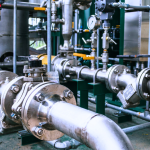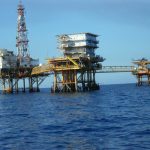Industrial boilers consume enormous quantities of fuel generating steam for manufacturing processes, facility heating, and power generation. Fuel costs represent the largest operational expense for most boiler systems, with facilities spending hundreds of thousands to millions annually depending on capacity and utilization. Traditional fossil fuel dependency creates exposure to volatile energy markets where prices fluctuate unpredictably, complicating budgeting and eroding profit margins. Solar-powered boiler systems offer innovative approaches to reduce fuel consumption substantially through hybrid configurations that leverage free solar thermal energy while maintaining the reliability and steam quality industrial operations demand.
The Economics of Industrial Boiler Operation
Boiler fuel expenses dwarf other operational costs including maintenance, water treatment, and labor. Natural gas, fuel oil, and coal prices vary regionally and seasonally, with geopolitical events and weather patterns creating dramatic swings that directly impact manufacturing economics. Facilities operating multiple boilers or large capacity systems may consume millions of therms annually, translating to fuel bills exceeding several million dollars where energy prices are high.
Beyond direct fuel costs, carbon pricing mechanisms in many jurisdictions add financial burdens to fossil fuel combustion. Emissions trading systems, carbon taxes, and regulatory compliance costs increase the total cost of conventional boiler operation while creating financial incentives for lower-carbon alternatives. Solar-powered boiler systems reduce both direct fuel expenses and carbon-related costs, delivering compounding savings that strengthen business cases for technology adoption.
Solar Thermal Integration with Boiler Systems
Solar-powered boiler systems typically employ solar thermal collectors that capture sunlight and convert it directly to heat rather than electricity. Evacuated tube collectors or parabolic trough systems can achieve temperatures exceeding two hundred degrees Celsius, sufficient for feedwater preheating or low-pressure steam generation. These solar thermal systems integrate with conventional boilers, reducing fossil fuel requirements proportionally to solar heat contribution.
Feedwater preheating represents the most straightforward integration approach. Solar collectors heat boiler feedwater from ambient temperatures to elevated levels before entering boilers, reducing fuel needed to reach steam conditions. More sophisticated systems generate low-pressure steam directly through solar concentration, blending it with boiler output or using it for applications not requiring high-pressure steam. We’ve designed solar-powered boiler systems that reduce annual fuel consumption by fifteen to thirty-five percent depending on solar resource availability, system sizing, and facility steam demand patterns.
The Solar Energy Industries Association documents growing adoption of solar thermal systems across industrial applications, with boiler integration representing one of the most economically attractive opportunities given high baseline fuel consumption.
Hybrid System Design and Optimization
Effective solar-powered boiler systems require careful engineering balancing solar contribution with conventional boiler capacity and control integration. Solar thermal output varies with weather conditions and time of day, necessitating controls that seamlessly blend solar heat with fossil fuel combustion to maintain steady steam conditions. Advanced control systems monitor solar collector output temperatures, boiler loads, and facility steam demands, optimizing fuel usage while ensuring steam pressure and quality remain within specifications.
Storage tanks can capture excess solar heat during periods when generation exceeds immediate demand, extending solar contribution into evening hours or cloudy periods. Thermal storage substantially improves solar utilization rates and system economics compared to instantaneous-use-only configurations. At Spenomatic Group, our engineering methodology for solar-powered boiler systems emphasizes reliability equal to conventional equipment while maximizing fuel displacement through intelligent design that accounts for seasonal variations, operational schedules, and future expansion possibilities.
Geographic and Seasonal Considerations
Solar-powered boiler systems deliver greatest benefits in regions with abundant solar resources and high fuel costs. Facilities in sun-rich areas including the southwestern United States, Middle East, Mediterranean regions, and tropical locations see superior performance compared to frequently overcast climates. However, even moderate solar resources provide meaningful fuel savings when integrated thoughtfully with existing boiler infrastructure.
Seasonal variations affect system performance and economic returns. Summer months typically provide peak solar contribution when collector output maximizes, while winter periods see reduced but still valuable solar heat generation. Facilities with year-round steam demands benefit most from solar-powered boiler systems, as consistent baseline loads ensure solar heat finds productive use regardless of season. We conduct detailed solar resource assessments and system modeling predicting monthly and annual performance, providing realistic expectations that inform investment decisions.
Financial Analysis and Return on Investment
Solar-powered boiler systems require upfront capital investment for collectors, mounting structures, controls, and integration with existing boiler plants. Costs vary substantially based on system capacity, collector technology selection, and site-specific installation factors. However, ongoing fuel savings create positive cash flows that recover initial investments over time while continuing to generate savings throughout system lifespans exceeding twenty-five years.
Financial analysis must account for fuel price escalation assumptions, as rising fuel costs accelerate payback and improve long-term returns. Available incentives including tax credits, grants, and renewable energy programs substantially enhance project economics in many jurisdictions. We provide comprehensive financial modeling incorporating all relevant factors, helping facility managers and financial decision-makers evaluate solar-powered boiler systems against alternative investments competing for capital allocation.
Operational and Maintenance Requirements
Solar thermal collectors require periodic cleaning to remove dust and debris that reduces solar absorption, with cleaning frequency depending on local environmental conditions. Evacuated tube systems may need occasional tube replacement if breakage occurs, while controls and pumps require standard maintenance similar to conventional boiler auxiliaries. Overall maintenance demands remain modest compared to fuel cost savings, with most facilities integrating solar system maintenance into existing boiler plant procedures.
Monitoring systems track collector performance, heat output, and fuel displacement continuously, providing operators with visibility into system contributions and alerting to any performance degradation requiring attention. We implement comprehensive monitoring that quantifies fuel savings in real-time, validating expected performance while identifying optimization opportunities that maximize return on investment.
Environmental Benefits Beyond Cost Reduction
Solar-powered boiler systems generate substantial emissions reductions proportional to fuel displacement. Each therm of natural gas avoided prevents approximately five kilograms of CO2 emissions, with heavier fuels producing even greater carbon intensities. Annual emissions avoidance from solar-powered boiler systems can reach hundreds or thousands of metric tons depending on system capacity, providing measurable progress toward corporate sustainability commitments.
The International Energy Agency identifies industrial heat decarbonization as crucial for meeting global climate targets, with solar thermal integration representing one of the most technically mature and economically viable solutions currently available for immediate implementation.
Conclusion: Solar Innovation in Steam Generation
Solar-powered boiler systems deliver compelling dual benefits of operational cost reduction through fuel savings and environmental improvement through emissions avoidance. Technology maturity, favorable economics in appropriate applications, and mounting pressure for industrial decarbonization create strong rationales for facility managers to evaluate solar thermal integration seriously.
Boiler systems are complex, and solar integration adds layers requiring specialized knowledge. You need partners who’ve actually done this work, not just read about it. We’ve implemented solar-powered boiler systems across industries from food processing to chemicals, and we know where challenges hide and how to solve them. Our team includes mechanical engineers, controls specialists, and boiler experts who collaborate to deliver systems that work as promised from day one. If you’re serious about cutting fuel costs while greening your operations, Spenomatic Group brings the practical experience that turns solar thermal concepts into reliable, money-saving reality. Let’s talk about what’s possible for your facility.
FAQs
1. Can solar-powered boiler systems provide steam during cloudy weather?
Yes, hybrid systems maintain conventional fuel-fired boilers that automatically compensate when solar contribution decreases, ensuring continuous reliable steam supply regardless of weather conditions.
2. What percentage of boiler fuel can solar realistically displace?
Depending on system sizing and solar resources, typical installations displace fifteen to thirty-five percent of annual fuel consumption, with some optimized systems in excellent solar locations achieving higher displacement.
3. Do solar-powered boiler systems work for high-pressure steam applications?
Solar thermal can preheat feedwater for any boiler pressure or directly generate lower-pressure steam for appropriate applications, with conventional boilers handling high-pressure requirements.
4. What payback periods should facilities expect for solar boiler integration?
Payback typically ranges from five to ten years depending on system costs, fuel prices, solar resources, and available incentives, with ongoing savings continuing for decades.
5. How much space do solar thermal collectors require?
Space requirements vary by system capacity, but typical installations need fifty to one hundred square meters of collector area per million BTU of daily heat contribution.







